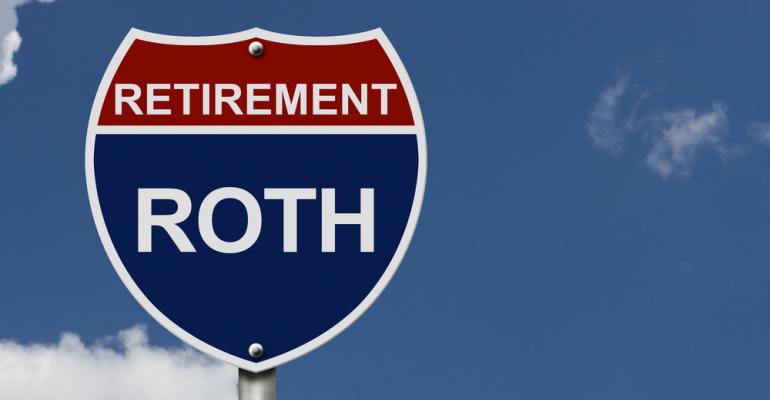“Rothification” has emerged as a popular buzzword lately. Although no formal legislative proposals have emerged, the essential element is that all or part of defined contribution plans would be converted to Roth-like plans. One rumored option is that participants could divide their contributions between pre-tax and after-tax 401(k) accounts. In another version, all future contributions would go to Roth 401(k)s, although employers’ matches would remain pre-tax.
Some critics have labeled this idea an accounting gimmick intended to help the government boost short-term revenue. Nonetheless, any compulsory Rothification could have potentially serious consequences on participants’ behavior and their retirement readiness.
State of the Market
Roth 401(k)s have been available since 2006, and an estimated 50 to 60 percent of plans offer the option. St. Petersburg, Fla.-based Employee Fiduciary LLC recently reviewed 2,767 small 401(k) plans and found that about 67 percent include Roths. However, relatively few participants were using the Roth option, according to Eric Droblyen, the company’s CEO. Eighty to 90 percent of participants made only pre-tax contributions, 5 to 10 percent made Roth-only and another 5 to 10 percent made both pre- and after-tax contributions.
Amy Reynolds, partner with Mercer in Richmond, Va., says most employers view Roths as opportunities to provide tax diversification for their participants and frequently add the option when implementing other plan design changes. “I think where employers may not be inclined to add Roth is if they are concerned that it will add complexity and cause confusion for participants,” she says.
Who Moved My Tax Cheese?
Marina Edwards, senior consultant with Willis Towers Watson in Madison, Wisc., believes the average plan participant understands how income tax brackets operate and the distinction between pre- and after-tax accounts’ taxation at withdrawal. But participants are less likely to understand the concept of tax diversification and how having both types of accounts can improve their retirement income management. Consequently, tax diversification has become an important element in participant education. “Now that you’re in the plan and you’ve got contributions that are going into a target date fund and you’ve got asset diversification, now let’s consider whether you’ll benefit from tax diversification,” she says. “So, it’s like the next chapter of our learning about retirement planning.”
Rothification would improve tax diversification but a decline in savings rates resulting from a shift to post-tax contributions would reduce many Americans’ retirement readiness. Droblyen believes a large-scale change would be devastating. “401(k) plan savers are simply too conditioned to believe that saving on a pre-tax basis is one of the most important benefits of a 401(k) plan today,” he said in emailed comments. “You take that benefit away, most people would say the value of their 401(k) plan has been diminished, making plan participation less likely.”
Reynolds expresses similar concerns. She notes that sponsors and financial services firms have spent years promoting the benefits of pre-tax retirement savings through workplace plans. Changing the message could backfire. “To turn around now and to have that change, even if there may be some financial benefits to participants under varying potential circumstances for them to make those contributions on an after-tax basis, you’ve kind of changed the messaging from what we have traditionally put out there as the primary advantage to these programs,” she says.
Would Inertia Win?
Analyses comparing the projected accumulated values of traditional and Roth accounts usually assume savers contribute less to Roths. For instance, someone in a 20 percent combined marginal tax bracket would invest $1,000 into a traditional 401(k) but only $800 into a Roth to reflect the lost $200 tax savings.
But is that a realistic assumption? A 2015 study found “no evidence that introducing a Roth 401(k) option decreases total 401(k) contribution rates.” One of the study’s authors, John Beshears, assistant professor in the Negotiation, Organizations & Markets Unit at Harvard Business School, discussed the findings with the Wall Street Journal. He noted that people frequently follow rules of thumb to guide their financial decisions. Two of these rules—contribute to earn the full employee match and save some target percentage, say, 10 percent, of your income—lead employees to maintain their savings behavior under both tax treatments. It’s an interesting notion and one that might soon be tested on a much larger scale.





